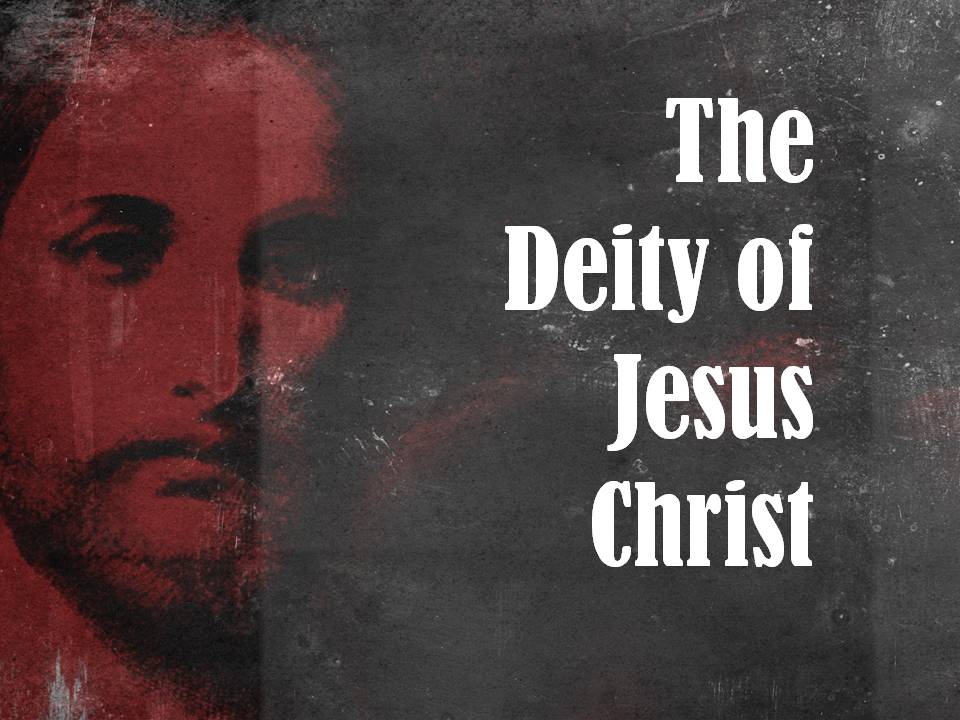The Deity of Christ in the Gospel of Mark
 A view often propounded by contemporary skeptics is that the deity of Christ is not presented by the gospel of Mark and that the Christology of the gospels evolves from Mark’s gospel (generally thought to be the earliest written), which does not present Jesus as divine, to John’s gospel (generally thought to be the latest written), which does present Jesus as divine. To what extent, however, can this be considered true? Does the gospel of Mark really make no claims concerning Jesus’ divine status as many critics contend? In this article, I will argue for the deity of Christ using Mark’s gospel alone.
A view often propounded by contemporary skeptics is that the deity of Christ is not presented by the gospel of Mark and that the Christology of the gospels evolves from Mark’s gospel (generally thought to be the earliest written), which does not present Jesus as divine, to John’s gospel (generally thought to be the latest written), which does present Jesus as divine. To what extent, however, can this be considered true? Does the gospel of Mark really make no claims concerning Jesus’ divine status as many critics contend? In this article, I will argue for the deity of Christ using Mark’s gospel alone.
Prepare the Way of the Lord
In Mark 1:1-3, we read,
The beginning of the gospel of Jesus Christ, the Son of God. As it is written in Isaiah the prophet, “Behold, I send my messenger before your face, who will prepare your way, the voice of one crying in the wilderness: ‘Prepare the way of the Lord, make his paths straight,’”
This of course is a reference to Isaiah 40:3, a prophecy which is obviously in reference to Yahweh. Thus, in the first three verses of Mark’s gospel, we already have a declaration of the deity of Christ.
The Holy One of God
In Mark 1:23-25, we read,
And immediately there was in their synagogue a man with an unclean spirit. And he cried out, “What have you to do with us, Jesus of Nazareth? Have you come to destroy us? I know who you are—the Holy One of God.” But Jesus rebuked him, saying, “Be silent, and come out of him!”
Even the demons recognized who Jesus was — that he was the Holy One of God! This is a title used in the Old Testament, most usually to describe Yahweh Himself (e.g. Psalm 71:22; Psalm 78:41; Isaiah 12:6).
Who Can Forgive Sins But God Alone?
In Mark 2:5-7, we read,
And when Jesus saw their faith, he said to the paralytic, “Son, your sins are forgiven.” Now some of the scribes were sitting there, questioning in their hearts, “Why does this man speak like that? He is blaspheming! Who can forgive sins but God alone?”
And indeed who can forgive sins but God alone? The sins that Jesus claimed authority to forgive were not sins that had been committed against him. Only God has authority to forgive in that way. The scribes understood the significance to Jesus’ claim to authority to forgive sins.
Lord of the Sabbath
In Mark 2:27-28, when Jesus is accused by the pharisees of doing what is not lawful on the Sabbath, Jesus replied,
The Sabbath was made for man, not man for the Sabbath. So the Son of Man is lord even of the Sabbath.
How could anyone who is not God declare himself to be “Lord even of the Sabbath”?
Calming the Sea
Twice in the gospel of Mark we read of Jesus calming the sea (4:39-41; 6:50-51), which recalls occasions in the Psalms where Yahweh is described as doing this (e.g. Psalm 89:9; 104:7; 107:29). The latter of those occasions on which Jesus calmed the sea involves Jesus also walking on water, something that Yahweh is spoken of as doing in Job 9:8 and 36:16.
“Whoever is Ashamed of Me”
In Mark 8:38, we read the words of Jesus:
For whoever is ashamed of me and of my words in this adulterous and sinful generation, of him will the Son of Man also be ashamed when he comes in the glory of his Father with the holy angels.
Could these words really have been uttered by someone who was merely a man?
The Transfiguration of Jesus
Mark 9 narrates the transfiguration of Jesus, which bears some striking parallels to Yahweh’s appearance to Moses on Mount Sinai. For one thing, the event takes place on top of a high mountain. Mark takes three companions with him (Exodus 24:1-9) and likewise is radiant (Exodus 34:29-35). The two figures who appear with Jesus — Moses and Elijah — are also of significance, for they are the two individuals in the Old Testament who sought to “see” God. Both of their encounters with God, however, are veiled. While Moses hides in a cleft in a rock that he might only see God’s back (Exodus 33:22-23), Elijah experiences only signs (1 Kings 19:11-12). In Mark 9, Moses and Elijah are no longer hiding, but freely conversing with Jesus.
Cursing the Fig Tree
In Mark 11:12-14, we read of Jesus cursing the fig tree:
On the following day, when they came from Bethany, he was hungry. And seeing in the distance a fig tree in leaf, he went to see if he could find anything on it. When he came to it, he found nothing but leaves, for it was not the season for figs. And he said to it, “May no one ever eat fruit from you again.” And his disciples heard it.
Again, this incident recalls certain Old Testament texts where the withering of a fig tree, brought about by God, is a frequently employed image (e.g. Isaiah 1:30; Isaiah 34:2-4; Jeremiah 8:13; Hosea 2:14; Hosea 9:10,15-16).
The Son of Man
By far Jesus’ favorite self-designation throughout the gospels is the title “Son of Man”, and this is a title used many times in Mark. Perhaps most notably, in Mark 14:61-64, we read the account of Jesus’ interrogation:
Again the high priest asked him, “Are you the Christ, the Son of the Blessed?” And Jesus said, “I am, and you will see the Son of Man seated at the right hand of Power, and coming with the clouds of heaven.” And the high priest tore his garments and said, “What further witnesses do we need? You have heard his blasphemy. What is your decision?” And they all condemned him as deserving death.
The Son of Man, in connection with “coming with the clouds of heaven”, is a clear reference back to Daniel 7:13-14 in which we read of Daniel’s vision:
I saw in the night visions, and behold, with the clouds of heaven there came one like a son of man, and he came to the Ancient of Days and was presented before him. And to him was given dominion and glory and a kingdom, that all peoples, nations, and languages should worship him; his dominion is an everlasting dominion, which shall not pass away, and his kingdom one that shall not be destroyed.
This divine-human figure seen by Daniel is said to receive worship from all nations — who but God is fit to receive worship? Indeed, the High Priest knew exactly what Jesus meant — and it resulted in him tearing his clothes and declaring Jesus a blasphemer.
Conclusion
Above I have provided only a handful of cases from Mark’s gospel where the divine nature of Christ is clearly conveyed. The view that Mark does not present Jesus as divine is simply devoid of traction.




Leave a Reply
Want to join the discussion?Feel free to contribute!